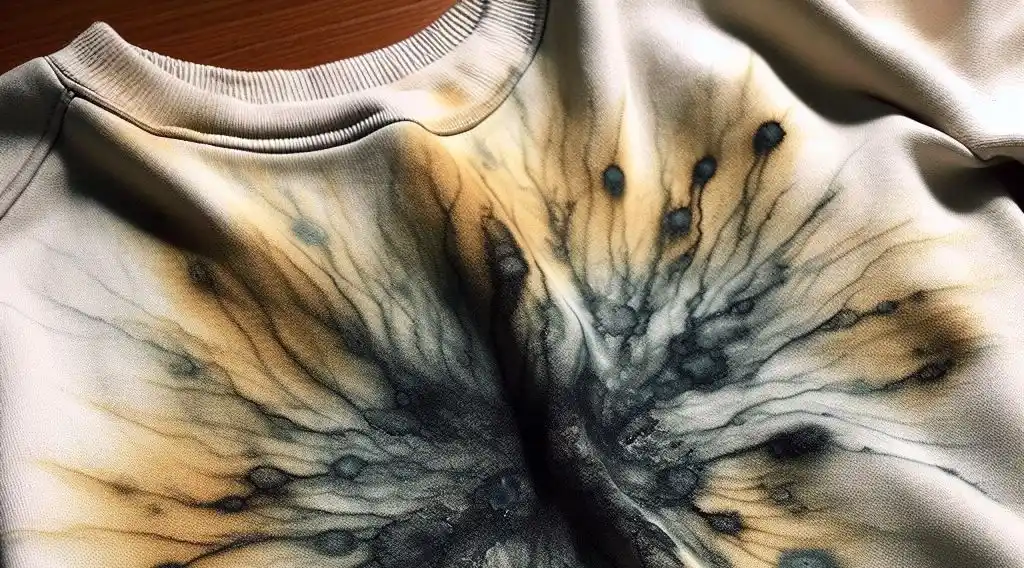How to Wash Chemicals Out of Clothes in Washing Machine – The Guide for Wash Out Pesticides
Are you worried about getting harsh chemicals, like pesticides or formaldehyde, out of your work clothes or other contaminated clothing? Washing machines can remove some residues, but getting fabrics completely clean takes a careful approach.
In this comprehensive guide, you’ll learn How to Wash Chemicals Out of Clothes in Washing Machine and proven methods to wash pesticides, solvents, and other toxic chemicals out of clothes in a washing machine. With the right detergent, wash cycle, and preparation, you can eliminate hazardous substances and make garments safe to wear again.
Table of Contents
Why Properly Washing Contaminated Clothes Matters
Exposing your skin to residual pesticides, solvents, or chemicals left in clothing can lead to rashes, breathing trouble, headaches, and other health issues. Babies and children are especially vulnerable.
Specific chemicals also accumulate more on certain fabrics. For example, formaldehyde has a particular affinity for bonding to cotton fibers in clothes and other textiles.
Washing garments in an ordinary laundry cycle often fails to fully remove many hazardous residues. But taking some extra steps will allow you to:
- Safely eliminate chemicals like pesticides, formaldehyde, chlorine, and more
- Prevent skin reactions or breathing irritation from contaminated clothes
- Stop toxins from collecting in laundry machines or transferring to other laundry
- Reuse valuable work uniforms, protective apparel, kids’ clothes, and other items
In short, learning proper techniques for washing pesticide residues out of clothes allows you to protect yourself and your family from harm.
How to Wash Chemicals Out of Clothes in Washing Machine

While specific recommendations depend in part on the type of chemical, follow these general guidelines whenever washing potentially hazardous substances out of clothing:
Check the Garment Label and Chemical Instructions
- Carefully read clothing labels for any special washing instructions related to chemicals — including requirements like dry cleaning only.
- Also check the chemical’s product label or Safety Data Sheet for guidance on cleaning contaminated clothes, including the necessity for disposable gloves.
Wash Items Separately
- Wash contaminated garments separately from other laundry to prevent cross-contamination. Never mix with regular family laundry.
Pre-treat Tough Stains
- Heavily stained areas may require pre-treating. Try soaking in baking soda or other degreasing solutions before washing.
Wash Using the Hottest Water Safe for Fabric
- Use the hottest water recommended for the fabric type. The high temperature helps dissolve and rinse away residues.
Add Detergent Booster
- Extra detergent or boosters help lift stains and trap chemicals in the suds rather than re-depositing on clothes.
Rinse Thoroughly
- Make sure to rinse clothes completely — repeating cycles as needed until the water runs clear. This prevents residue build-up.
Line Dry Outdoors If Possible
- Sunshine and fresh air help fully eliminate some chemicals. If line drying isn’t possible, use the highest heat dryer setting appropriate for the fabric.
With those general tips in mind, now let’s look at proven methods for washing specific hazardous substances out of laundry…
How to Wash Pesticides Out of Clothes
Pesticide exposure represents one of the most common — and dangerous — chemical contamination risks for clothing. Farm workers, pest control technicians, landscapers, and DIY gardeners often get concentrated solutions or sprays on their skin and work uniforms.
The following methods allow you to safely remove pesticide residues from washable garments without spreading toxins to other laundry:
Check Labels for Special Pesticide Washing Instructions
- Pesticide labels may provide special handling instructions for cleaning exposed clothes. For example, guidance for organophosphate insecticide laundering instructs soaking before washing. Always read and follow label guidance.
- For additional help, contact organizations like the Pesticide Safety Education Program (PSEP) for your region or the product manufacturer.
Wash Twice Using Hot Water
- Washing contaminated clothes twice improves pesticide residue removal versus a single cycle.
- Use the hottest water allowed for the fabric type. Heat helps dissolve and release pesticide residues so suds can capture the chemicals.
Presoak Tough Stains
- Soaking clothes for 15-30 minutes before washing can lift concentrated pesticide stains.
- For powerful stain removal, dissolve 1/2 cup baking soda per gallon of water for an alkaline-based soaking solution. Acids like white vinegar also work well for breaking down residue bonds with fibers.
- Always soak and wash pesticide gear separately from other laundry.
Add Laundry Booster or Detergent
- Extra detergent increases soil and grease removal needed to extract lipophilic (fat-soluble) insecticides like pyrethroids from fabric.
- Laundry boosters containing activated oxygen lift tough set-in stains.
- Never mix pesticide laundry with regular household loads that dilute detergent concentration.
Dry Thoroughly Outside If Possible
- Line or rack drying pesticide-contaminated clothes in the sunshine helps break down remaining residues using UV rays.
- If drying inside, use medium or high heat — but take care with items prone to shrinking or heat damage.
Repeated washing with hot water plus strong detergent removes the majority of pesticide residues from clothes and other washable fabrics. But for the most contaminated gear or lasting odors, you may need to take extra measures…
Advanced Methods to Remove Difficult Pesticide Residues

For severe cases of pesticide contamination that resist normal washing methods, try these additional steps recommended by pesticide safety organizations, scientific research, and cleaning experts:
Pre-rinse Garments Outside
- Before any indoor washing, hose down clothing outdoors to prevent pesticide-laden water from contaminating interior pipes and laundry areas.
Wash Using Laundry Additives
- Add 1 cup baking soda to the wash cycle as a pesticide residue removal booster.
- If compatible with fabric material, use 1 cup white vinegar as a rinse agent to eliminate alkaline mineral residue or buildup.
- Adding 1/2 cup lemon juice also helps dissolve oily buildup. Monitor for colorfastness.
Wash Using Hot Water Plus Chlorine Bleach
- Heavily contaminated cotton and other bleach-safe fabrics wash best with hot water PLUS chlorine bleach added to detergent.
- The oxidizing effects of chlorine accelerate chemical breakdown. Make sure to rinse clothes thoroughly afterward.
Repeat Wash Cycles
- Put clothes through a complete wash cycle using hot water and detergent TWO OR THREE consecutive times to maximize removal of pesticide residues.
Dry Outside in Direct Sunlight
- Sunshine’s UV radiation rapidly degrades certain chemicals. Line dry garments in full sun where possible, even if you need to finish drying indoors.
With severe pesticide contamination, getting rid of all traces often requires determination using a combination of special additives, repeat washes, and drying. But taking these extra steps lets you reuse valuable clothing free of harmful residue.
Formaldehyde Removal from Clothes and Fabrics
Formaldehyde represents another hazardous chemical that sometimes contaminates clothing — particularly cotton garments and linens subject to off-gassing from resin treatments. Babies and young children face added risks from sustained skin exposure or breathing irritant fumes.
Use the following reliable steps to wash formaldehyde out of contaminated clothes, sheets, upholstery, and other machine-washable items:
Check Labels for Washing Guidance
- Review clothing or fabric labels for chemical warnings or special formaldehyde removal instructions. Manufacturer guidance takes priority over general washing guidelines.
Wash Twice Using Hot Water
- Formaldehyde residues are released more easily using higher temperatures. Wash garments twice using hot water compatible with the fabric.
Use Extra Laundry Detergent
- Increased detergent lifts and traps gaseous residues in suds so they rinse away rather than re-depositing on clothing.
Soak Prior to Washing
- For badly contaminated fabrics, dissolve 1 cup of baking soda per gallon of water to soak items for up to 8 hours before washing.
Add Vinegar to the Rinse
- White vinegar helps neutralize and remove traces of formaldehyde residue from fabric fibers during rinse cycles.
Line Dry Thoroughly Outdoors
- Sun-drying clothing allows fresh air flow plus UV degradation of any remaining formaldehyde.
Combining these tips oxygenates and breaks down stubborn formaldehyde compounds to provide toxin-free clothing safe for reuse.
How to Remove Solvents, Grease, and Oil from Clothes
Industrial workers, auto mechanics, and do-it-yourselfers often get solvents, fuels, lubricating oils, or grease on clothing. Safety-Kleen, kerosene, gasoline, brake fluid, and other substances require special handling to remove from fabric without spreading contamination or damaging clothes:
Check Solvent Label for Washing Guidance
- Labels for dry cleaning solvents, degreasers, and other chemical products recommend procedures for cleaning clothes, avoiding damage, etc. Follow directions.
Pre-treat Oil or Grease Stained Areas
- Lightly blot excess oil, grease, tar, or solvent from fabric using a paper towel or an absorbent cloth BEFORE laundering. Don’t smear, spread out, or press stains further into the weave before washing.
- For heavy stains on durable fabrics, apply a degreasing paste. Let paste soak for 10-30 minutes THEN gently scrape residue from fabric using a non-metallic utensil.
- Rinse pre-treatment chemicals out prior to washing clothes.
Wash Twice Using Hot Water
- Hot water dissolves grease and oil residues from fabric more effectively than cold or warm water in most cases.
- Detergent requires sufficient heating to activate cleaning agents that emulsify grimy residues.
Use Heavy Duty Laundry Detergent
- Extra detergent works better to penetrate, surround, lift, and flush away oil-based contaminants.
- Liquid detergents offer better cleaning action against solvents and petroleum oils compared to powder forms.
Add Stain Removing Booster
- Oxygen-based laundry boosters help eliminate set-in oil and solvent-based stains.
- Borax and washing soda add to cleaner alkaline conditions.
- Avoid using chlorine bleach or other hazardous oxidative additives like oxalic acid mixtures.
Combining these practical techniques allows you to safely remove solvents, oils, grease, tar, and similar substances from washable fabrics without risking fire hazards or spreading contamination further.
Special Considerations for Removing Pesticides from Baby Clothes
Guarding your baby’s sensitive skin requires extra care in washing pesticide residues from contaminated clothing. Follow these tips to safely, and effectively remove all traces from baby garments without using harsh chemicals:
Prioritize Pre-Treatment
- Removing pesticide residues works best with prompt attention before washing baby clothes. Don’t allow stains to set in.
- Carefully dab semi-solid residues using a soft cloth and tepid water BEFORE laundering fabric. Avoid grinding material deeper into the weave.
- For liquid spills, let fabric fully air dry before handling to prevent spreading contamination.
Wash Twice Using Hot Water
- Hot water dissolves pesticide bonds with fabric most effectively. Use the hottest setting safe for baby clothes fabrics.
- Washing garments twice improves removal versus a single wash.
Use Sensitive Skin Detergent
- Choose an unscented, dye-free baby laundry detergent. These gently lift soils without perfumes or harsh enzymes that may irritate the baby’s skin.
Skip Fabric Softeners
- Fabric softeners and dryer sheets can leave an irritating chemical residue on baby clothes. Avoid these laundry additives.
Rinse Clothes Thoroughly
- Make sure to rinse baby clothes TWO OR THREE times if needed to completely flush out all pesticide residues or detergent film.
Line Dry Outside If Possible
- Sun drying allows the sanitizing effects of fresh air and sunlight.
Taking these extra steps keeps harmful pesticide residues away from your baby’s delicate skin while allowing you to reuse baby garments free of contamination.
How to Wash Gross Filth Out of Hunting Clothes and Gear
Hunters face extreme dirt and grime dealing with field dressing games, setting traps, working hunting dogs, etc. Special measures allow you to remove blood, bodily fluids, animal oils, mud, field soil, vegetation, and other challenging substances from hunting apparel:
Rinse or Hose Off Clothing Outdoors
- Outside, use a garden hose, spray nozzle, or water bucket to sluice away as much filth from fabric as possible BEFORE washing indoors.
- Letting extremely soiled items partly dry outside also avoids the challenges of rinsing later.
Check Labels for Special Cleaning Directions
- Hunting gear labels indicate wash methods suitable for water resistance, temperature limitations, etc.
Wash Using Hot Water Plus Sanitizing Detergent
- Hot water dissolves and suspends more organic filth than lower temperatures.
- Detergents containing sanitizers help remove bodily fluids and neutralize them in wash water.
Use Extra Oxygenating Laundry Booster
- Extra oxygen-based boosters help lift out blood, oils, mud, and other soils from hunting clothes.
Check Drain Screens Afterward
- Fibrous mud or vegetation may clog the internal washing machine plumbing. Remove drain screens carefully and rinse out debris.
Hunters and anglers rely on special field clothing engineered for silent movement, scent masking, insulation, water resistance, and other attributes. Tailoring wash methods protects technical fabric performance and avoids negative health or environmental consequences.
How to Remove Mold, Mildew, or Musty Smells from Clothes
Flooded basements, damp storage closets, travel to humid climates, and other situations can lead to mold contamination and accompanying musty odors in fabric:
Wash Twice Using Hot Water and Vinegar
- Wash clothes twice using hot water and white vinegar — 1 cup per wash load. Vinegar sanitizes and deodorizes moldy clothes.
Dry Thoroughly Using Medium or High Heat
- Drying on a clothesline often fails to heat fabric enough to kill mold spores or remaining musty smell.
Try Sun Drying THEN Machine Heat Drying
- If possible, hang clothes outside to air out and sundry BEFORE machine heat drying to fully eliminate mold and musk.
Do NOT simply cover up mold odors using fragranced fabric softener. Thoroughly wash away all contamination and let fabrics completely dry to prevent a return of stubborn mold and accompanying stench.
Bleaching Away Stubborn Stains on White Fabrics
For badly stained white cotton, linen, or certain synthetic blends, bleaching allows you to remove discoloration along with some chemical residues. But take care using hazardous bleaching agents like chlorine:
Spot Test Fabric First
- Apply bleach to unseen seam or hem areas to check for discoloration or damage BEFORE treating visible clothing areas.
Protect Your Hands and Eyes
- Wear gloves and eye protection while handling bleach. Avoid splashing skin or clothing.
Rinse Twice After Bleaching
- Always rinse bleach residue from clothes TWICE to prevent fabric damage from chlorine. Check that water runs clear.
Only Use Bleach Types Compatible with Fabric
- Read clothing labels for guidance. Only apply chlorine bleach to white cotton and linen. Use non-chlorine oxygen bleach for colors and synthetics.
With proper handling, bleaching removes severe stains without harming fabrics. But never use bleach except as a last resort once other methods fail. The powerful chemicals require careful effort to rinse out completely after use.
Special Considerations for Removing Chemicals from Wool and Silk
Delicate natural fabrics like wool and silk require particular care to avoid fabric damage by removing pesticides, solvents, mold, or other hazardous chemical residues:
Check Labels for Special Cleaning Instructions
- Wool, cashmere, silk, suede, and similar fabrics rely on explicit handling guidelines to prevent harm during laundering or chemical removal.
Hand Wash Gently Using Cold Water
- Hot water and machine agitation mat and felt delicate wool or stress silk fibers. Use cool water and gentle hand laundering instead.
Limit Detergent and Additives
- Harsh cleaners that work on sturdy cotton can still damage sensitive fabrics. Limit sudsing agents and other additives with delicates.
Reshape and Line Dry Flat
- Pinch, shape, smooth, and line dry delicate items flat to prevent stretching saggy bags or creases not amenable to ironing later.
Special care and handling allow you to safely wash chemicals out of expensive wool suits, cashmere sweaters, silk dresses, and other delicates without shrinkage or damage during cleaning.
Conclusion: Learn Proven Methods to Keep Clothes Contamination-Free
Whether dealing with harsh pesticides, skin-irritating formaldehyde, grimy automotive grease, smelly mold, or other hazardous chemicals, residential washing machines LET you remove contaminants from clothing BUT…
The process requires using the right detergents, booster additives, soak methods, water temperatures, agitation, rinse cycles, and drying techniques for each situation.
Checking clothing labels plus chemical safety guidance provides a starting point.
But ultimately, inspecting garments carefully AFTER laundering ensures complete toxin removal for reuse and avoids risk of skin reactions for you or your family.
Don’t simply trust to luck with contamination — learn methods proven to get clothes clean enough for safe comfort and confidence.
Frequently Asked Questions About Washing Chemicals Out of Clothes
Can you put pesticide-contaminated clothes in the washer with regular laundry?
Never mix pesticide-exposed clothes or gear with your regular household laundry. Always handle separately to prevent hazardous chemical transfer and residue buildup throughout your machine.
What removes pesticide smells from clothes?
Bad odors come from lingering pesticide residues bonding within fabric fibers. Hot water, extra detergent, and laundry boosters remove the source contamination








